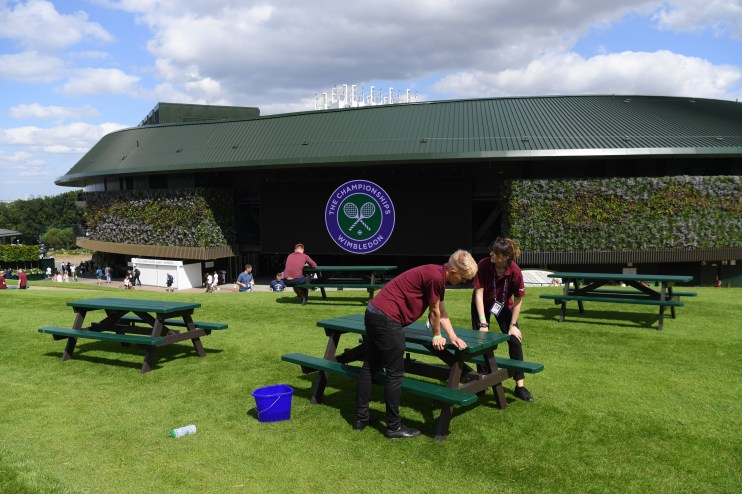Wimbledon 2019: Believe it or not, tennis is a sport in decline

Wimbledon is once again nearly upon us.
And despite the munificence of the championships and inspirational successes of Andy Murray, it is a staggering indictment that the long-term trend is a declining sport, turning over £1.5bn per annum.
Read more: Wimbledon men’s tennis is still finding its titanic trio hard to replace
In its latest annual report, the Lawn Tennis Association recorded a nine per cent drop in overall monthly participation levels and sits now below badminton.
The question is why?
It wasn’t meant to be like this. For 80 years after Fred Perry last won Wimbledon in the 1930s, the number of people playing and courts available plummeted.
The working assumption was that a new messiah-like champion would reinvigorate the game and reverse the decline.
Six years on from Murray’s historic victory, it just hasn’t worked, as he has himself often pointed out.
So whereas the big question used to be why don’t we have tennis champions, today the question is why don’t we have more people playing.
By some estimates, today tennis courts have at least 60 per cent fewer players than in the 1930s.
The truth is that, like tax, there is a Laffer curve that works in tennis too.
The more you raise the cost, the fewer people will play. In the 1920s and ‘30s, when most of todays’ tennis courts were built, land and labour were cheap and abundant. The game and British champions flourished.
Today, renting public courts, joining clubs, getting equipment and coaching can easily set you back a few thousand before you reach any reasonable standard.
There just doesn’t seem to be much opportunity for people who just want to turn up and play at minimum cost and effort.
That matters because in the USA, where park courts are free, they were instrumental to the rise of the Williams sisters, who could practice at no cost, even in the tough Los Angeles suburb of Compton.
To address this, the All England Club need to look again at how they distribute the annual Wimbledon surplus of £60m plus.
Instead of funding one monopoly trade body – the LTA – we need several competing with each other. And they need only be held to account by a simple maxim – how many new people did you get playing tennis with the money invested?
The one bright spot of LTA funding remains Tennis For Free – a charity committed to bringing free tennis to children and workless families and reinvigorating dilapidated park courts. They have grown substantially to 100 sites nationwide with plans to reach 500.
And if you want more champions, well, getting more people playing works for you too.
A big problem in tennis is skills compatibility. You need a sufficient pool of people of very close ability that live nearby and can play each other at a convenient time.
Read more: Why men’s tennis is at a crossroads in the UK
Join a club today and you’ll only find a handful of people who can do that.
So until you get more people playing – at least double the current 400,000 – like Murray, our future champions will have to come out of Spain and Florida.
Dan Lewis is chief executive of the Economic Policy Centre and author of “Rethinking Tennis for the Big Society”